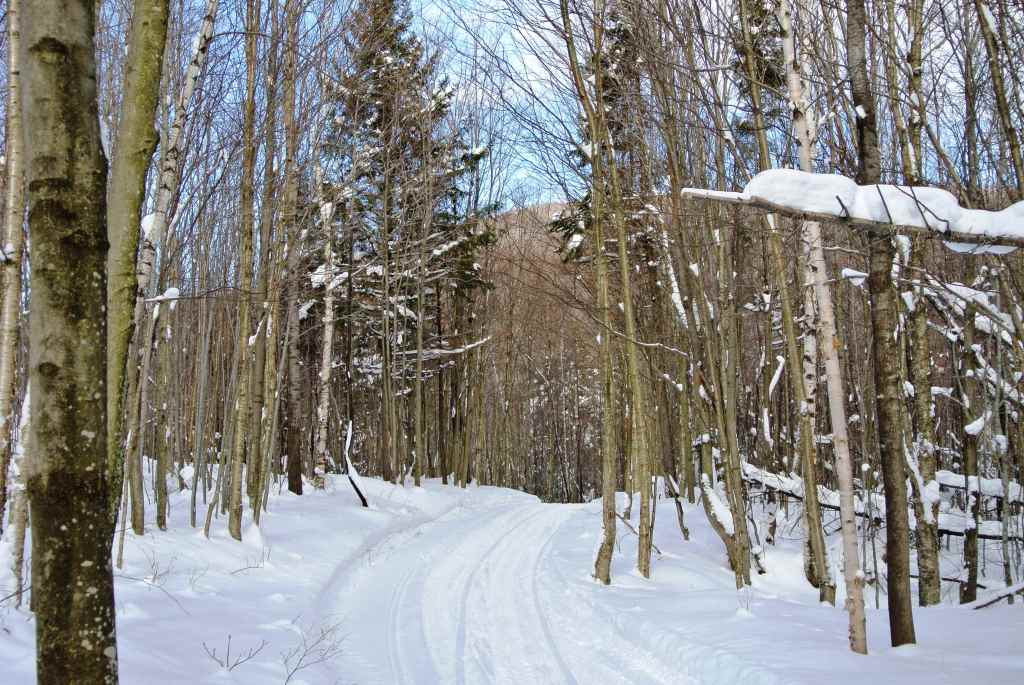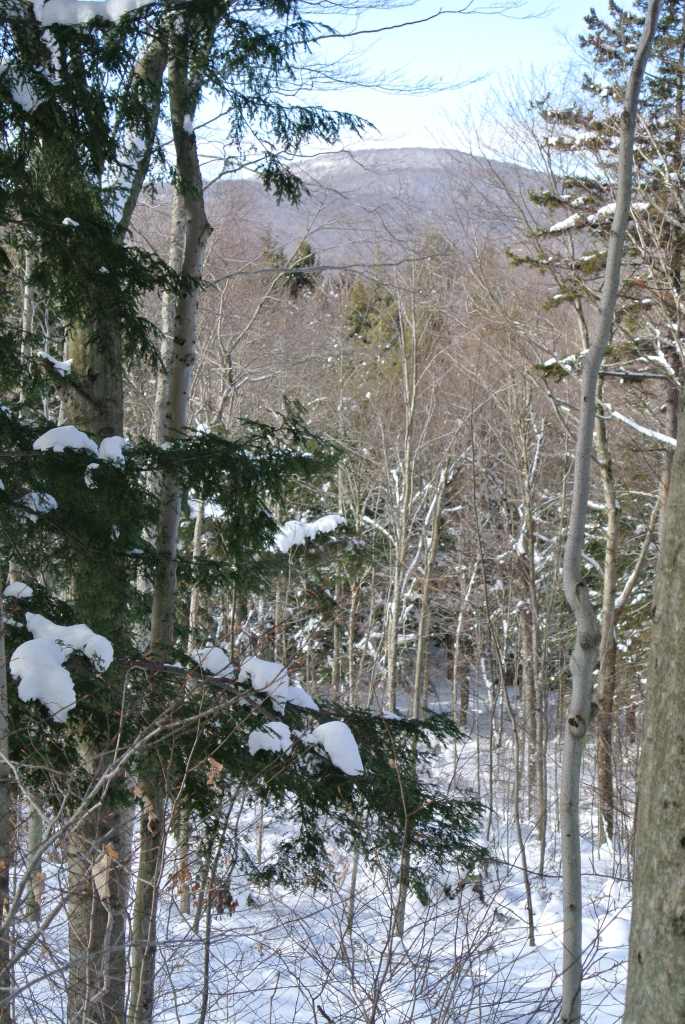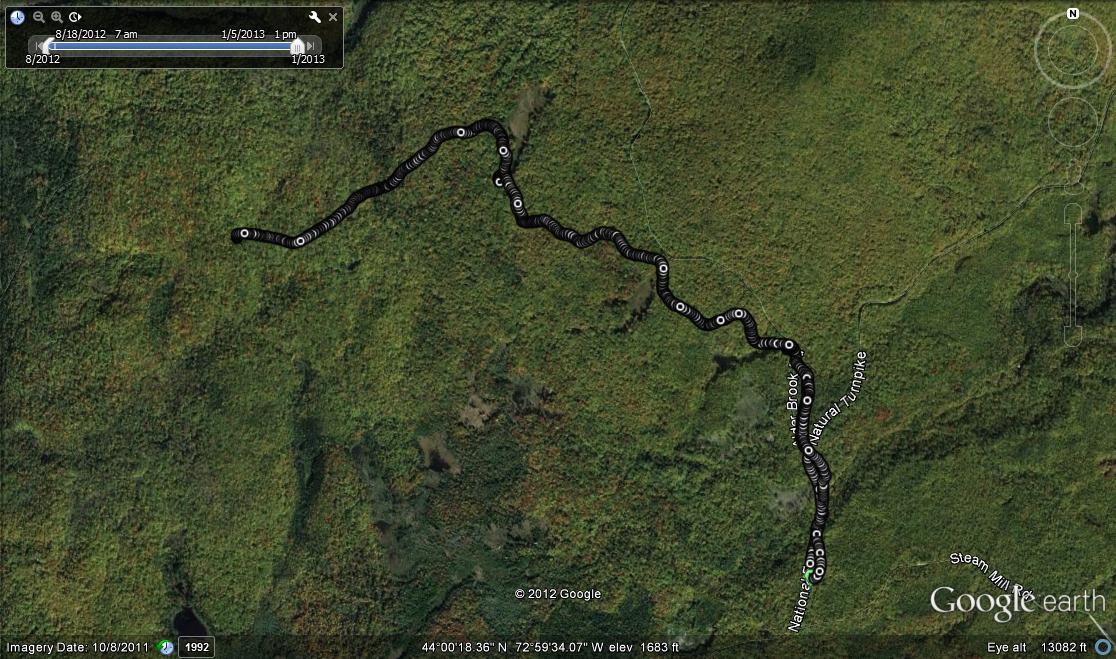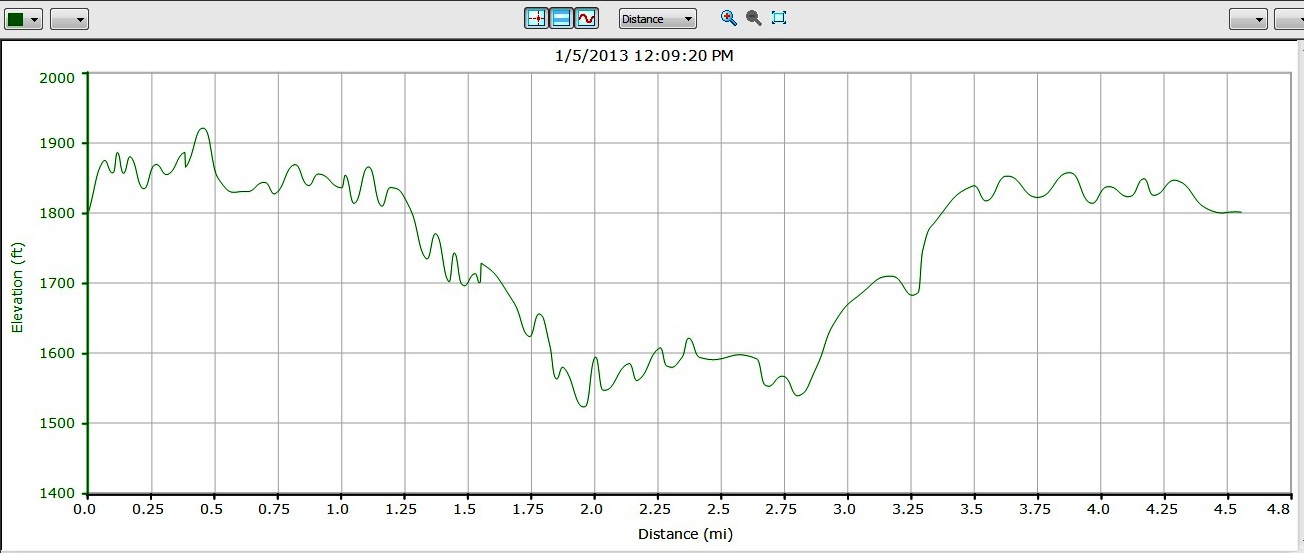It has been a few months since my last posting due to a myriad of injuries – nothing serious, but just the aches and pains that flare up with increasing regularity in middle age. So here it is, a relatively warm, sunny Saturday in early January, with the best snow cover in two years, and neither skiing nor running seeming like a good idea. So, it appeared like a good opportunity to add in a post dealing not with running, the primary focus of the blog, or cross country skiing, which usually keeps me busy over the winter, but with the slower, gentler pursuit of snowshoeing, at least until my body gives me the green light on the more vigorous activities.
I also decided to take it easy by doing this snowshoeing on the gentle passage of well-packed snowmobile trails, maintained by the VAST organization for snowmobilers, but open to skiers, hikers and snowshoe enthusiasts in the winter. One short stretch of trail had been piquing my interest for some time. I first discovered the winter trailhead accessing the Ripton end (as opposed to the Breadloaf/Rikert end) of Forest Service Road 59 about two winters ago, and described a short run on this snowy, well-packed route heading towards the Rikert Ski Touring Area. A quick look at some snowmobile trail maps indicated that it is also possible to follow this trail, traveling in the opposite direction, up over the summit of Robert Frost Mountain from the east, and descend to Middlebury International Airport. I wrote about the trail connection between the airport and the summit of Robert Frost Mt. as well a few years ago. Today seemed like a good day to reconnoitre this route for a future longer run or ski.
The trailhead can be accessed by driving up to Ripton, taking a left turn onto Lincoln Rd in front of the Ripton General Store, followed by a right turn onto Robbins Crossroad, and a left onto Natural Turnpike. Then, just follow Natural Turnpike until its seasonal terminus to park your vehicle. Strapping on my snowshoes over my Bean boots, I set off, taking a left up a short hill, following the well marked snowmobile trail, which paralleled and occasionally intercepted the dirt road on several occasions, before finally crossing to the left and heading into the woods. From this point on, most of the scenery was as expected with the well-packed ribbon of the trail ambling through the hardwood forest. Subtle signs of the Green Mountain National Forest’s logging use were apparent. While clear cutting does not appear to be as prevalent as it once was, heading through one stand of uniform small-circumference hardwoods and a total lack of ground cover shrubs indicated that this area had been selectively lumbered fairly recently.

One of the great pleasures of exploring these high-altitude forests is coming across large open meadows alongside streams, typically the result of beaver activity. This trip brought me past at least 3 or 4 of these. After almost two miles on the trail, which I learned from VAST trail signs was Trail 7A, I came to a hillside where, looking west, I could see the wooded summit of Robert Frost Mountain a few miles away, indicating that I was indeed heading in the correct direction, facilitating a run to come in the future!

Shortly after this, I could tell by the way the snow was packed that the trail was no longer groomed by and for the snowmobilers – although there was still ample snow on the ground, a snowplow had clearly come through, probably as part of more recent logging operations. Sure enough, a short distance later, I came across a clearing full of logging equipment, and the logging vehicle shown below really looked like a very serious ATV!

I could see from my Garmin GPS that I had been hiking about 2 and a third miles, so it seemed like a good time to turn around and retrace my steps back to my waiting vehicle for about a 4.5 mile trip. Some winter hikers and skiers are reticent to travel on snowmobiling trails, but I have always found the snowmobile enthusiasts courteous, and surprisingly rare! Over the course of the roughly hour and a half I was on their trails, I only saw two small parties of snowmobilers, and one other hiker. Not bad for one of the most beautiful Saturday afternoons of the year!


Hey Jeff, I enjoyed your article, but I have an equipment question. When I use my Tubbs snowshoes with my Bean boots, I have a problem with the binding slipping off the heel. Have you had that issue? Otherwise they are perfect for snowshoeing, but this is getting irritating!
Thanks,
Bardy
I am afraid I also have that issue, and the only solution I have found is to regularly futz with the bindings to keep the snowshoes from falling off. Sorry I don’t have any deeper insights!